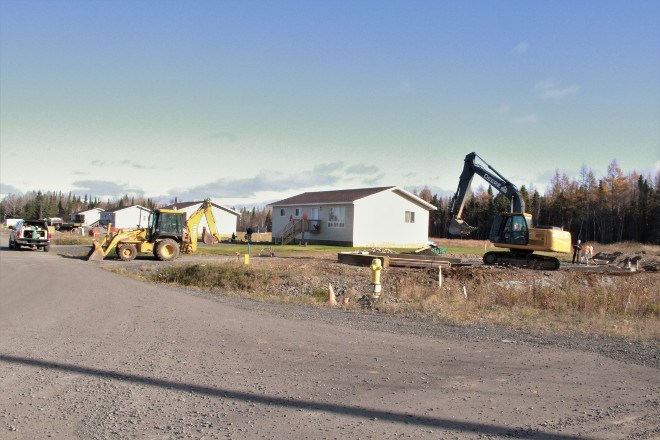Fort William First Nation’s housing developments are proving to be so successful administration is considering a plan to help fellow reserves with the process.
The First Nation’s latest neighbourhood has seen nine homes completed and is preparing for 11 more, bringing the total to 20 new family dwellings. A feat that Ian J. Bannon, the band’s director of lands and property management says is due much in part to the excellent track record.
He stressed that families for these homes are not pre-approved. A call for applications will go out in the near future.
The building project was started two years ago and this latest phase is employing 11 contractors, all band members, an important aspect as it is they who understand the logistics of building in their community, as well a creating a self-sustaining economic base within the community.
Current construction includes prep work, digging trenches to water, sewer and electrical, as well as putting foundations and insulation in place before the ground freezes so contractors can get to work building frames.
“They will be building through the winter, so they will be ready for families to move in next year,” said Bannon. “It’s just starting now, a bit of a late start, but we all agreed that the project will go ahead, then take the appropriate measures to accommodate the cold weather.”
The project is also an opportunity for training for the contractors, he said, as well as a source of short-term income. While they are all band members and independent construction contractors, Bannon explained the band makes sure all of them are certified through the WSIB, as they are all hiring staff to help them complete the project.
To secure funding for these new homes, the band has to work with the Canada Mortgage and Housing Corporation. Bannon explained there is a special set of regulations for on-reserve non-profit housing, called Section 95 On-Reserve Non-Profit Housing Program. A major part of that section includes a band’s administration must determine how many homes it wants to build and includes forms and spreadsheets to help the band calculate how much it would cost and how much of that cost it can carry on its own.
Variables factored in include building codes, cost of materials and alternate ways to build, among others.
“While Fort William succeeds, we want to know why that is,” he said. “We are planning on creating a formula all reserves can use to help them gain access to Section 95.”
In the end, he said it will help all of the countries’ reserves better themselves by building strong, stable communities.
While there are many factors at play, he said housing has been a chronic problem on reserves and has to be taken seriously if the federal government and individual bands want to improve their communities.




